Patchwork is a game of Tetris without the speed stresses. It’s literally all about “knitting” a quilt from pieces of “patchwork”. Does it get any more granny-zen than that? (No offense, knitters!)
It’s a two-player game I’ve found great for whipping out on a relaxed evening in. There’s nothing too intense going on here. Patchwork works well if you aren’t in the mood to exercise your brain cells too much.
I’ll tell you all you need to know about the Patchwork board game on this page. Let’s get into it.
Before You Begin
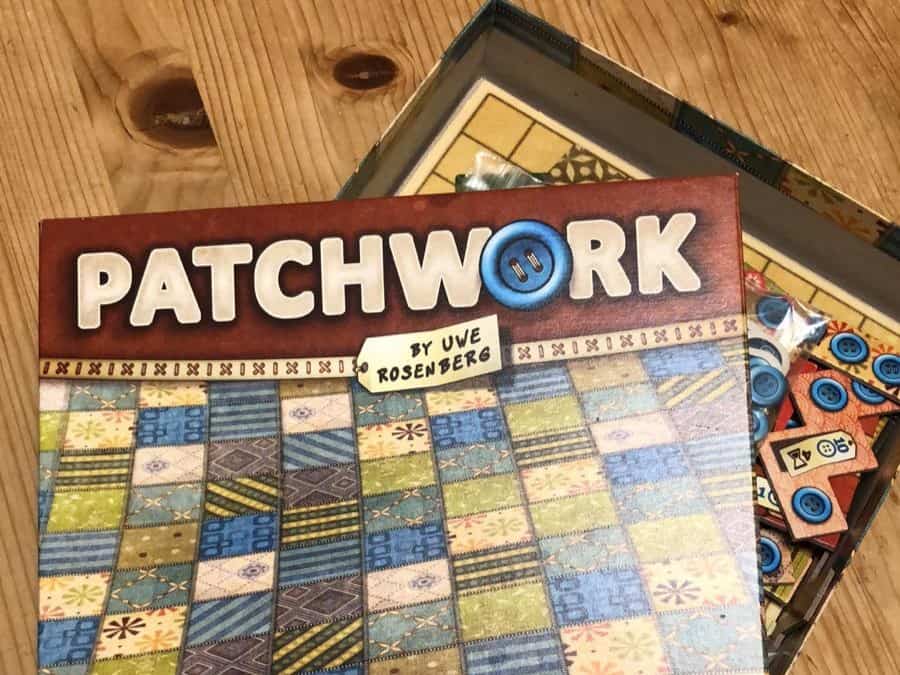
Before you begin, Patchwork takes up a surprising amount of space. Play on a kitchen table or on the floor. In our experience, playing on the floor is best, although not on a thick-pile rug or carpet. The buttons and smaller pieces must disappear!
Popping the pieces out can take some time. Of course, you won’t ever have to do it again, but allocate ten minutes to get everything out and in order.
Although there are quite a few pieces, you’ll quickly get the hang of it. Don’t get overwhelmed. If you’re familiar with the concept of Tetris, you’ll have no trouble picking up Patchwork.
Patchwork Setup
You could play this game facing each other or in any additional setup. If necessary, you could sit next to each other with the main playing area in front of both of you. There aren’t any secrets involved in this game, so it’s not like you’ll have a hand to hide from your opponent.
Place the central time board in the center (or wherever you can both see it best). Place each player’s time tokens on the starting space and add the 1×1 small square patches. Pile the buttons together somewhere nearby – these are the game’s currency.
Each player should have:
- A quilt board
- Five buttons to get started
Next, lay the rest of the patches around the central time board. The precise shape doesn’t matter too much, although it usually ends up being some kind of oval. Make sure it’s a complete shape, either way. The pieces should be laid out randomly.
After you’ve done this, place the neutral token between the smallest patch (a 1×2 piece) and the next clockwise piece.
Just before you start, lay the special tile out. The first person to completely fill a 7×7 space on their quilt board receives this bonus. It can’t be exchanged for buttons to clear that up straight away!
Now you’re all sorted and ready to play.
How to Play
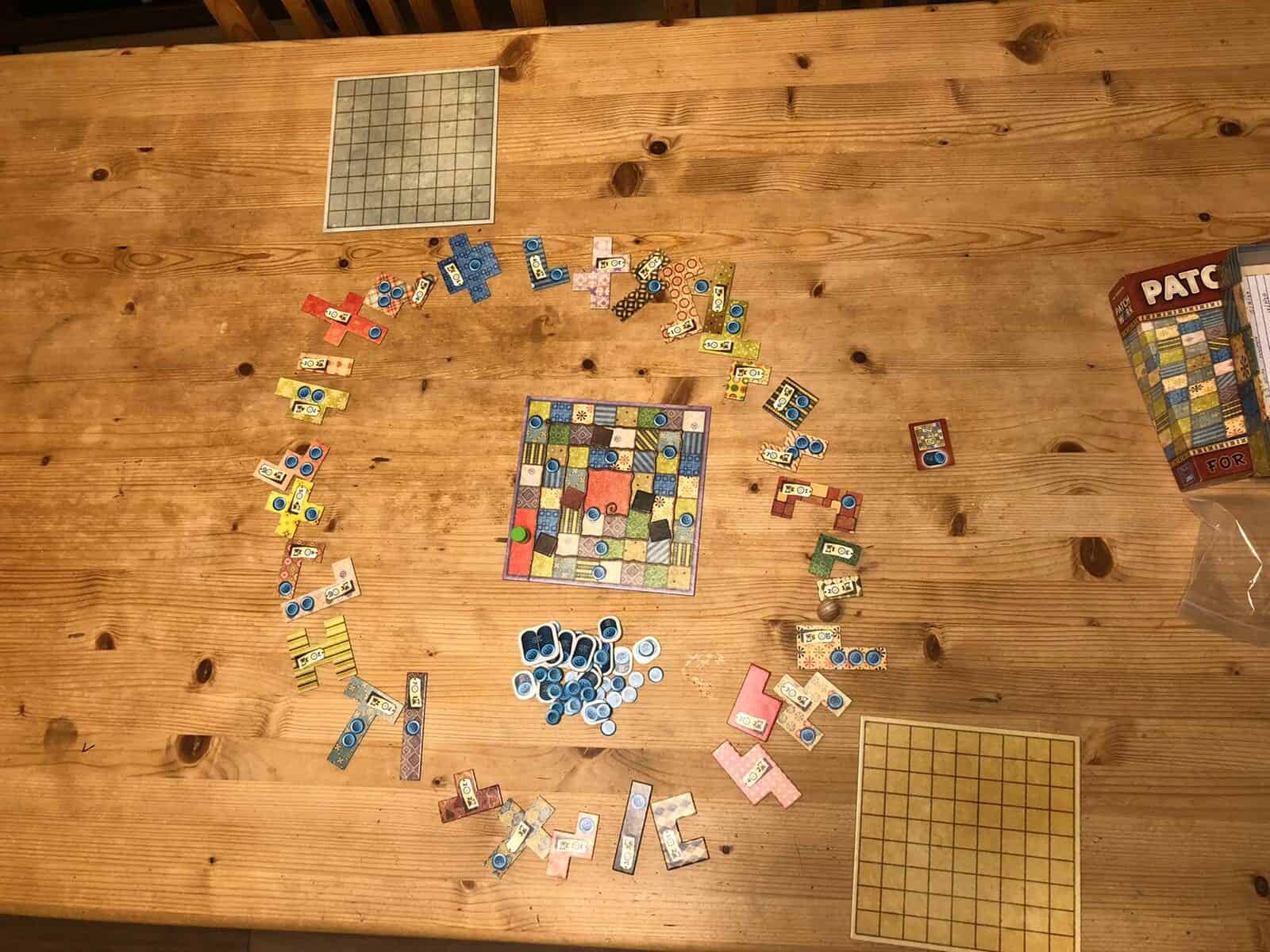
According to the rules, whoever worked on fabrics last goes first. If like me, you haven’t held a sewing needle since making a terrible finger puppet project as an 11-year-old, it’s much easier to toss a coin or something.
Unlike most board games, you don’t necessarily alternate turns in Patchwork. The concept is more like golf (the sport on a field with clubs, not the card game). Whoever is last on the central time board takes their turn. This keeps the playing field relatively level for the duration of the game. Oh, and if you end up on the same space, whoever’s token is on top (whoever got there last) takes their turn.
When it’s your turn, you have a choice of two actions:
- Choose and place patches
- Advance your time token forward to receive buttons
See some more information on these below.
Choose and Place Patches
You can take any of the three patches directly in front of the neutral token. However, you must be able to afford it. The “button price” is shown on the token itself. Since you start with five buttons, you must select a patch that costs five or fewer. Basic mathematics and all that.
Once you’ve taken a patch you can afford (and paid for it – place your buttons in the pile with the rest), put the neutral token in the resulting empty space. You should move your time token along on the central board by the number of squares indicated on the patch.
Now, place your patch on your quilt board.
Advance Your Time Token Forward to Receive Buttons
If you’ve run out of buttons, you can get some more by advancing your time token forward on the central board. This replaces your go and means you can’t take any (more) patches.
Move your time token to the space in front of your opponent’s token. You’ll receive the same number of buttons as spaces you skipped forward. Now that you’re in front of the other player, it’s their turn.
If you’re far behind, you could take one, two, or even three patches and then advance forward, all before your opponent has their turn.
Time Board and Ending
As you play, your tokens will move around the central time board. You’ll cross the 1×1 patches and button icons along the way.
- The first player to cross each 1×1 patch takes it for their own board. You’ll inevitably find you need a couple of these throughout the game, so don’t waste them. As soon as your time token passes it, take it and add it to your quilt.
- As you pass the button icons, take buttons from the “bank” on the table. You’ll take the number you have on your semi-patched quilt board. For example, if you see seven buttons on the patches on your quilt, take seven from the pile. Investing in high-value pieces early gives you good momentum for the game.
Don’t forget about the special tile. Whoever completes a 7×7 grid first (with no holes!) gets the bonus and an additional seven points.
The game finishes when both players reach the finish space on the time board. Keep on playing until you’re both there.
If you finish by advancing your token forward, you must stop on the same final square. You only take the number of buttons you’ve moved, as usual.
Add up the number of buttons you have (and don’t forget the bonus points, if applicable). Subtract two from your score for every empty square on your quilt board. Whoever has the highest score wins!
If it’s a tie, the player who reaches the end of the time board first takes the victory.
Tips to Know in Advance
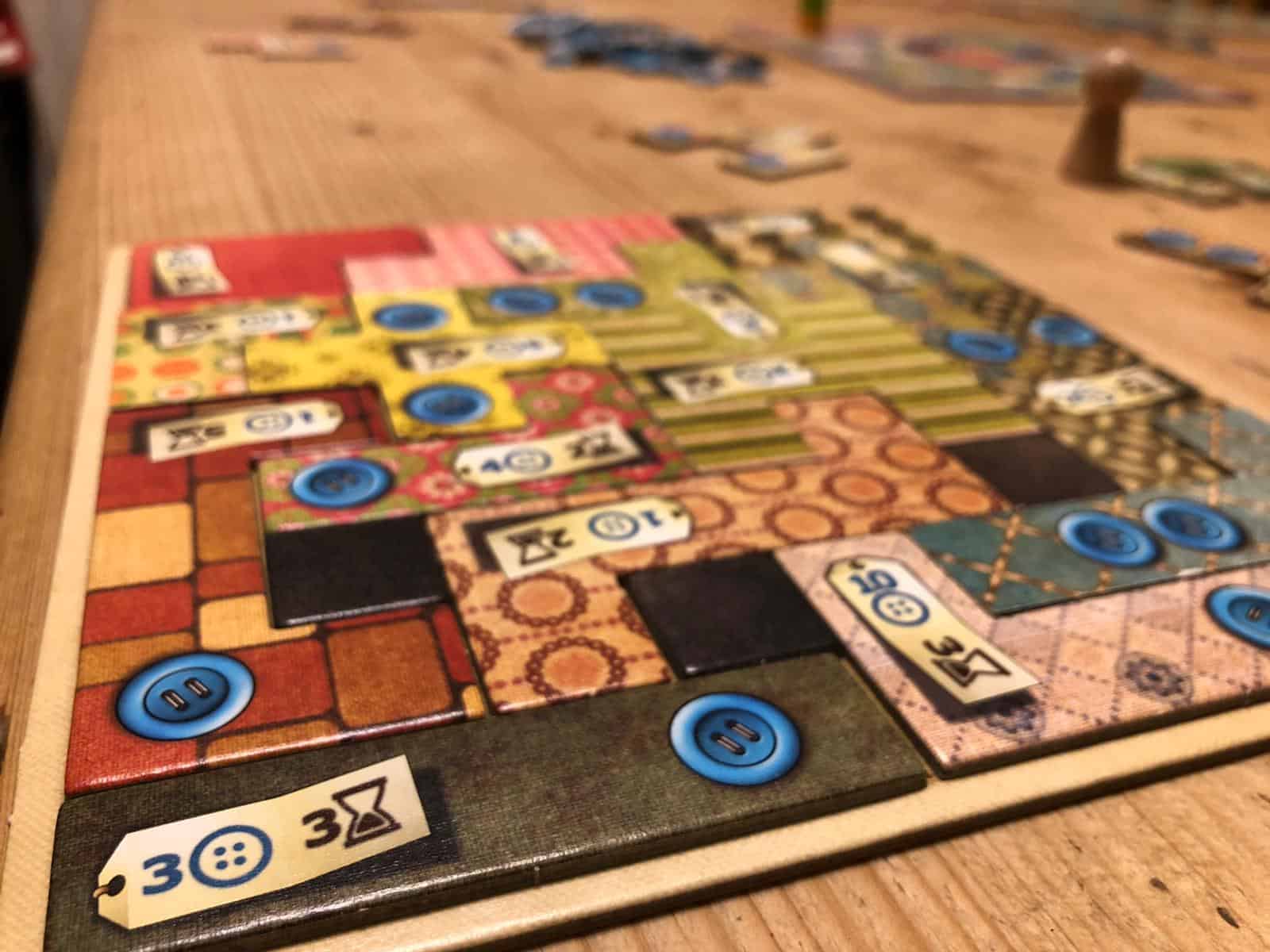
As you’re playing, keep several things in mind. Here are a few things I’ve learned:
- Work from the edges inward rather than from the center outward. I’ve found that this works much better. It means you don’t end up with awkward shapes and gaps left to fill with non-existent patches.
- As you fill the quilt board out, keep an eye on the pieces left on the table in relation to your board. The last thing you want is to create a gap that can’t be filled.
- You can manipulate your opponent to some extent. Watch where the neutral token ends up. You control this on your turn (to some degree). It’s sometimes possible to ensure your opponent can’t place a piece they need by keeping the token far away/jumping past it. You could also take a patch your opponent needs, even if it isn’t immediately beneficial to your quilt.
- As much as possible, I’d recommend getting high-value patch pieces. The more buttons you have on your quilt board, the quicker you’ll be able to buy more. Inevitably, you won’t start getting the serious points until near the end of the game – but finishing well starts with starting well.
- It’s sometimes a better idea to pass up on buying a patch if it’ll mean you’re going to run out of buttons. If this happens, you usually need to jump the other player to get back in the game.
- The bonus seven points don’t necessarily mean you win. It’s valuable and worth going for if you can, but don’t push for it with a do-or-die attitude. It might help, but if you sacrifice expanding your board, it might put you back slightly. Remember, each unfilled square is -2 to your final score. That is, it won’t be worth it if you spend time ignoring at least four squares in exchange for filling out an exact 7×7 grid. You’ll gain seven points and lose eight. In my experience, it’s best to go for covering as much of your quilt as possible. If you get the bonus, it’s brilliant – but it’s not of utmost importance.
- As you get to the last few turns, calculate whether it makes sense to get more patches or not. You’re aiming for the maximum number of buttons, remember. Sometimes this means not spending the ones you have as the game draws to a close.
Common Mistakes to Avoid
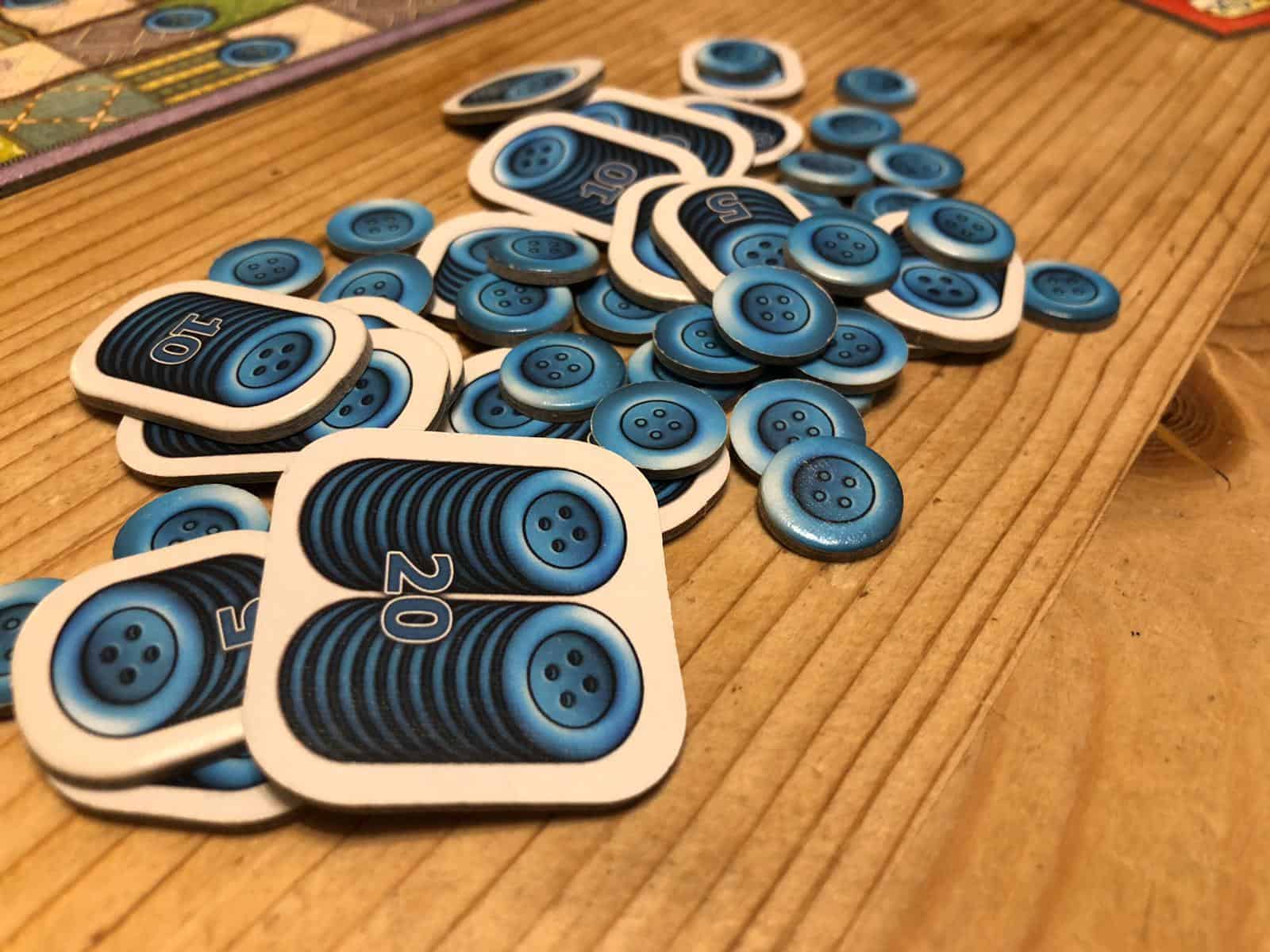
In my opinion, the biggest mistake you can make in Patchwork is taking it too seriously. Enjoy your pretend knitting and do your best to make a satisfying pattern. This game’s tactical moves are minimal, so make the most of what it is: a piece of light-hearted fun. I’d liken Patchwork to an adult coloring book. I’d rather lose than win with random 1-square holes everywhere!
I’ve read a few statistically clever tactics and strategies. Follow the link to read more if you’re interested. These techniques do work. While these won’t necessarily give you the win, they put you in the best position possible. However, I think these kinds of strategies are missing the point. If you want to play an intensely clever game, get your chess board out or throw Diplomacy onto the table.
Patchwork isn’t about that. To me, it would be like creating an algorithm for finding the answer in Guess Who? first (and people have done that). Yes, you could choose to go down that path, but it’s better to simply enjoy playing a basic game with your kids. Don’t miss that with Patchwork – it’s not too complicated. Just enjoy.
Other than that, the most important tactic is to build up high-value pieces on your quilt. If you don’t, you won’t have any way to get points, and by the end of the game, you’ll be too far behind to catch up.
Alternatives
Tetris
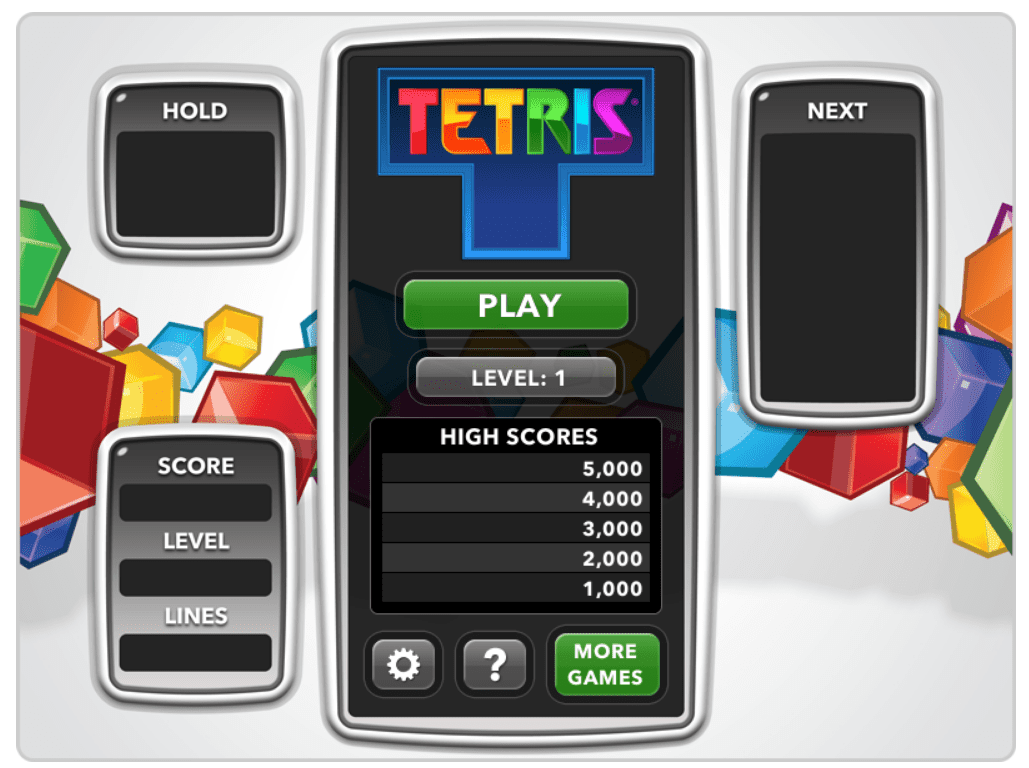
Tetris is a classic video game. I’m sure you’ve heard of it. If fitting pieces into place while the clock counts down is your idea of satisfying, Tetris is the original.
Personally, I’m terrible at Tetris. I get one thing wrong and then that one mistake quickly turns into failure. I’m happy to hold my hands up and admit it. But I can understand why so many people love it so much.
Tetris is available pretty much anywhere. Here’s a browser version I’ve tried out and enjoyed.
Jigsaw Puzzles

For some reason I can’t quite understand, many associate jigsaws with the senile and geriatrics. To me, they’re as therapeutic as adult coloring books or organizing bookshelves. Jigsaw puzzles are available everywhere, my friend – you just need to look. Find one with an image you enjoy piecing together or, if you prefer a challenge, go for the old Baked Beans version.
I don’t recommend overcomplicating things, really – enjoy a jigsaw for what it is. Therapy. You could print out a picture or even look at it online, but we like challenging ourselves to put it together bit by bit. For no real reason. It’s a gentle brain exercise.
Having said all that, I’m not very good at jigsaw puzzles. I don’t really have the patience needed for them. But you might!
Carcassonne
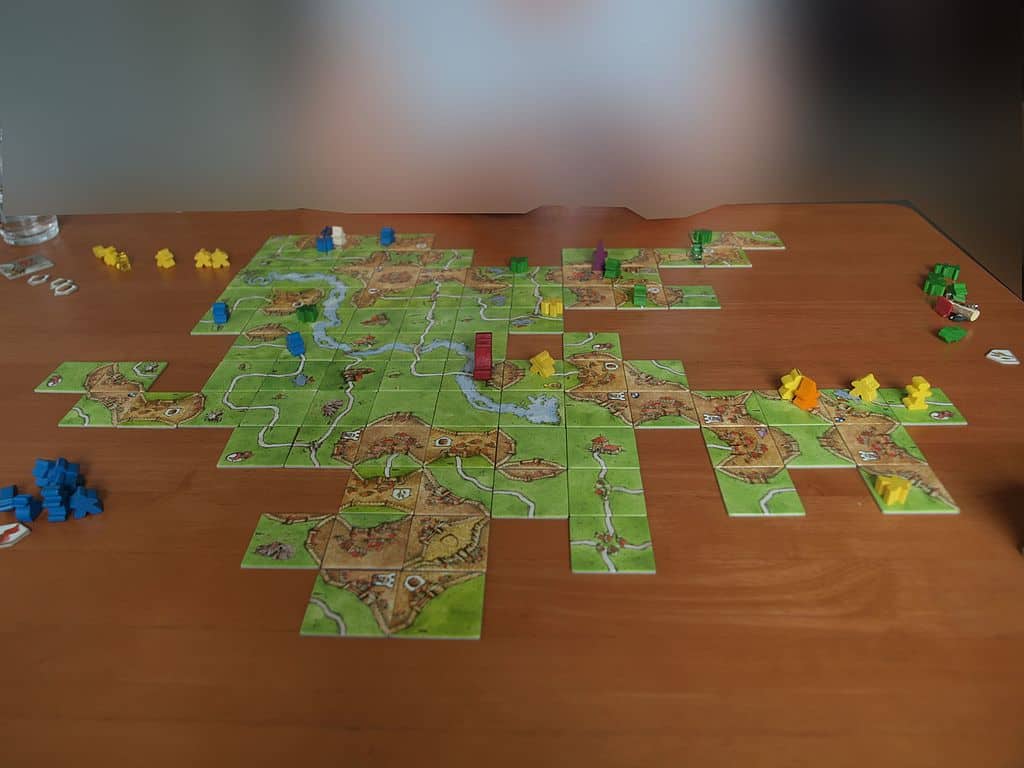
Okay, I’ll admit it: Carcassonne isn’t too similar to Patchwork. There are no quilts involved, no time constraints, and no currency. The similarities, in my mind, come with the spatial awareness tile-laying aspect. It’s similar to Patchwork in a broad degree.
In Carcassonne, you’ll need to place tiles and claim cities and roads (and more, depending on how many expansion packs you’re playing with) to claim Victory Points and win. The map starts from a river, and everyone takes it in turns to place a random tile. Over time, you end up with a mighty-looking but heavily divided kingdom.
I’d recommend Carcassonne for a more intense game. It’s not Monopoly-intense (thankfully), but there’s a lot more going on than in Patchwork. You have far more opportunities to sabotage each other and leech into each other’s point systems (or is that just me?). I prefer Carcassonne to Patchwork, overall. However, as I say, time and place.
Conclusion
I’d describe Patchwork as a game perfect for couples or to play with your kids. There’s almost no way to cheat (unless someone’s siphoning buttons off the table!), and the quilt board itself is almost calming. In this way, I find it quite unique as a game. You usually don’t mind losing, as long as you’ve given it your best shot.
Some people, of course, disagree with me. You can play an intense, algorithm-heavy version and ensure your victory. Well done you. But I think that misses the point.
Patchwork should be available from any good game store. It often costs around $30 for a new copy and $25 or so for a well-treated second-hand version. Find it on Amazon and check your local store (in person!). You could also try this online version from Board Game Arena.
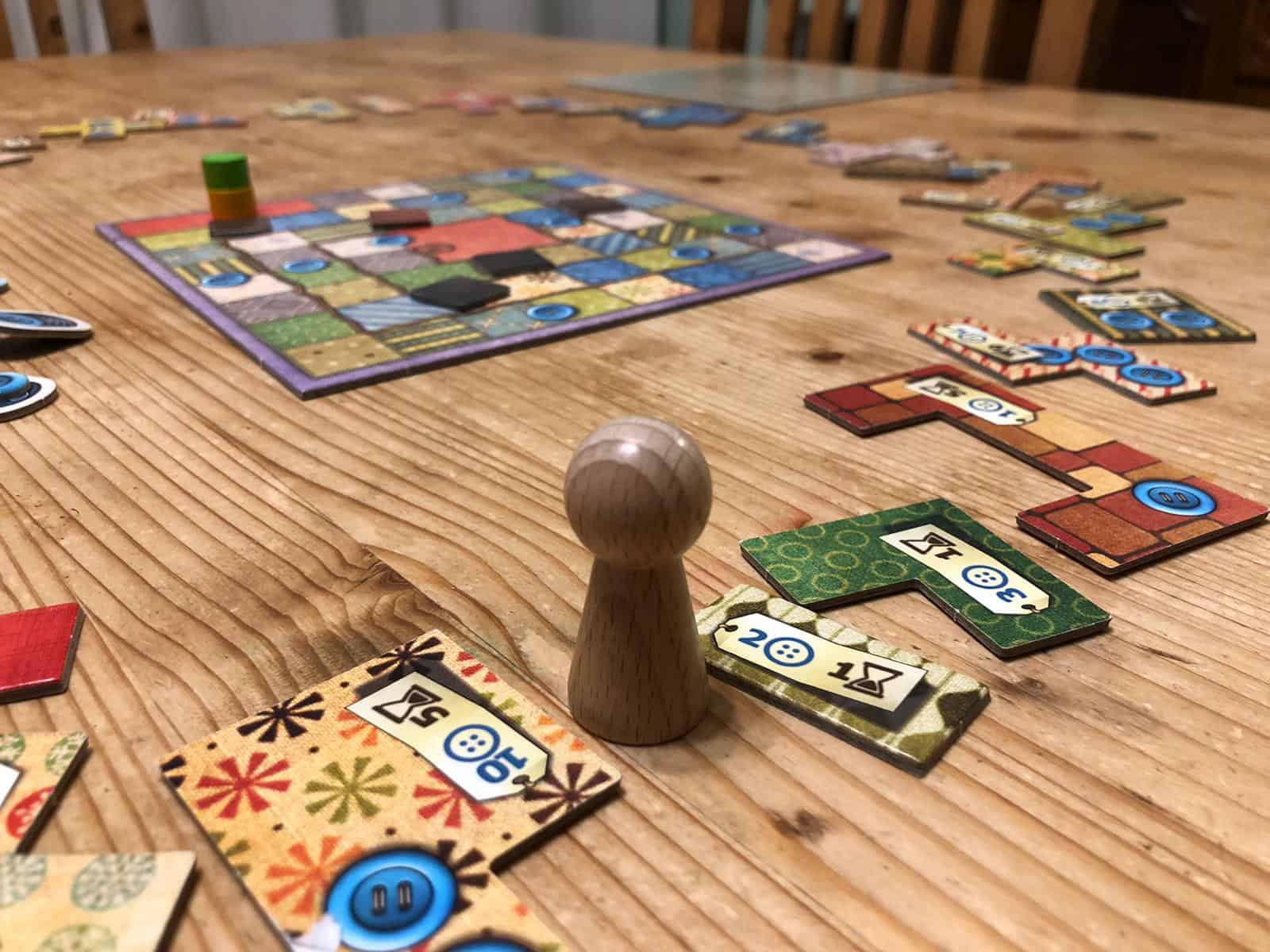
Frequently Asked Questions
Question: What is a good score in Patchwork?
Answer: In my experience, a good score in Patchwork is anything above 35 or 40. A poor score would be in the twenties or below. However, remember that you don’t necessarily need a good score – you just need a higher score than your opponent. I’ve rarely got beyond 50, so your realistic target should be somewhere in the forties.
Each game is different. Treat them as such. You don’t want the highest possible score; you want the highest possible score for your game.
It’s important to let you know that scores can be negative. Once you’re familiar with the game, this shouldn’t happen. Well, not unless you have an absolute shocker. But it’s possible.
Question: Can you complete the quilt board in Patchwork?
Answer: Definitely! I’d say casual players will complete the board between 30% and 50% of the time. It depends on how you play, of course, but it’s certainly possible. You’ll need to carefully select the correct patch pieces and use the 1×1 special tiles wherever applicable. I don’t think I’ve ever had a game where a player has had more than five or six squares missing.
Completing the quilt board is very satisfying!
Question: How do you score in Patchwork?
Answer: The buttons in Patchwork are both the game’s currency and your score. One button means one point.
You also receive negative points (-2) for each empty square on the quilt board. Finally, if you get the special bonus tile, you receive an extra seven points.
Looking for more interesting readings? Check out:
- Terraforming Mars Guide: Fighting for Spaces in Space - April 22, 2023
- Zathura Board Game Guide - April 20, 2023
- Ark Nova Guide – Zoo Complex, Or Complex Zoo? - April 8, 2023

